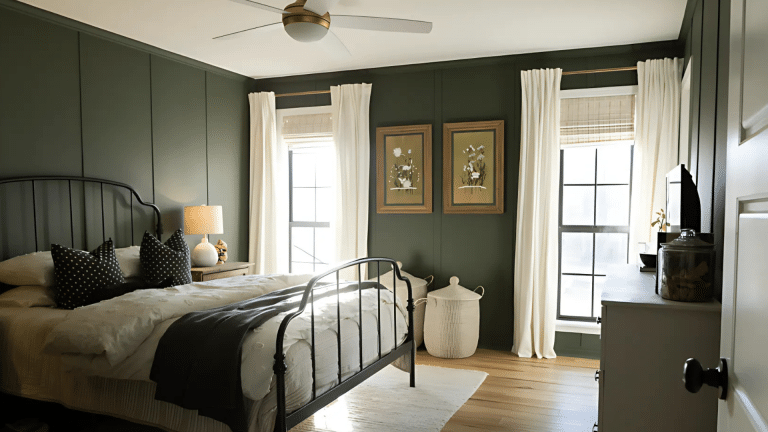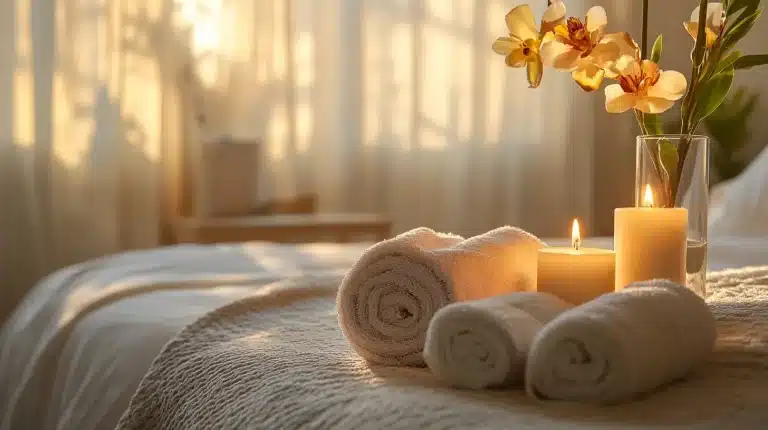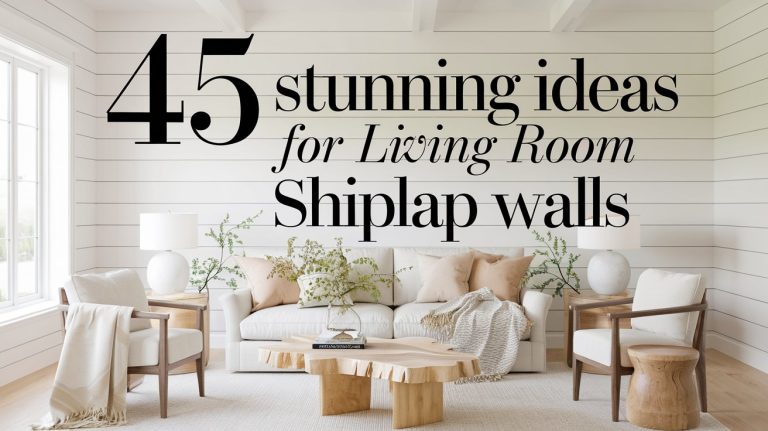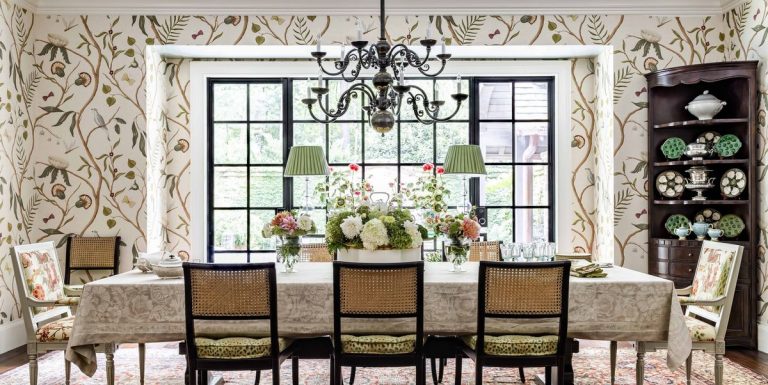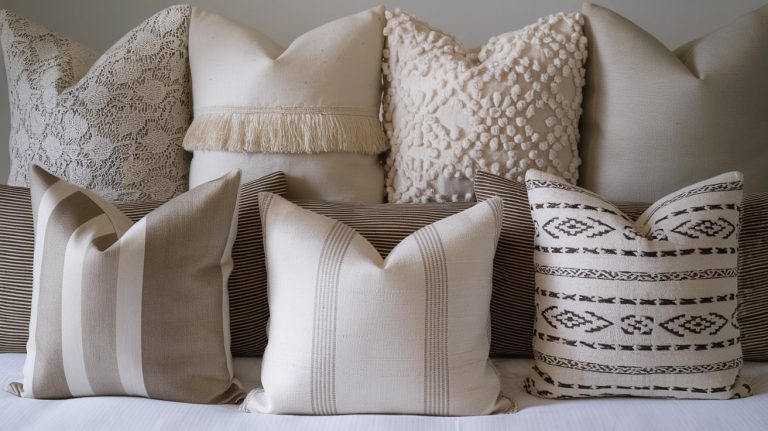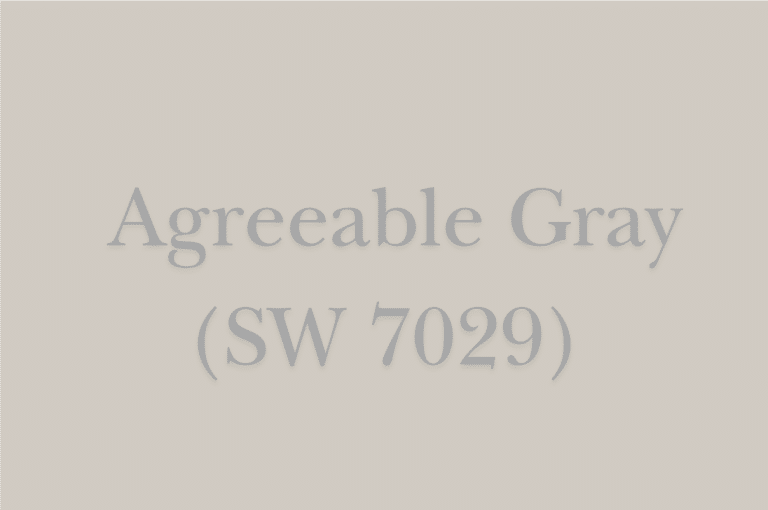What Is Harmony in Interior Design?
We’ve all felt the discomfort of walking into a room that feels “off.” The colors clash, the furniture seems out of place, and the space doesn’t work.
Creating a unified, pleasant space is hard without understanding harmony.
I can help you build spaces that feel balanced and complete. With the right approach to colors, shapes, and furniture placement, you’ll create rooms that feel naturally comfortable and put together.
This guide will show you what harmony actually means in interior design, explore different types of harmony, break down key elements that create it, and give you practical steps to apply these ideas in your own home.
How Does Harmony Affect Room Ambiance?
Harmony in interior design works like a hidden hand. It brings together all parts of a space so they blend well. When a room has harmony, you feel good just being there.
Many people know when a room looks good but can’t say why. The reason is often harmony. Harmony makes colors, shapes, and items work as one unit.
A room with harmony feels calm and easy on the eyes. The opposite feels chaotic and causes stress. Studies show that spaces with good harmony help people relax more.
Creating Comfort Through Harmony
Harmony directly links to how comfortable a space feels. When items in a room connect well, people feel more at ease.
Think of a time you felt uneasy in a space. The cause might have been poor harmony. Colors might have clashed, or furniture might have looked out of place.
In contrast, spaces with good harmony feel welcoming. They let people settle in without feeling something is wrong. This matters for both homes and workspaces.
The Different Types of Harmony in Interior Design
1. Visual Harmony
Visual harmony happens when colors, textures, and shapes work well together. This type of harmony is what most people notice first.
- Colors that complement each other create a flow
- Similar textures build unity across different items
- Shapes that echo each other help the eye move smoothly
2. Conceptual Harmony
Conceptual harmony ties a room together through a central idea or style. It gives purpose to your design choices.
- A clear theme guides all design decisions
- Each item supports the overall concept
- The style feels complete without random elements
3. Spatial Harmony
Spatial harmony deals with how objects fit in a space. It focuses on size, placement, and flow.
- Furniture sized right for the room feels natural
- Items placed with thought for movement paths
- The right amount of space balances filled areas
Harmony vs. Contrast: Finding the Right Balance
| Harmony | Contrast |
|---|---|
| Creates unity and flow | Creates visual interest and focus |
| It makes elements feel like they belong together | Highlights differences between elements |
| Uses similar colors, shapes, and textures | Uses opposing colors, shapes, and textures |
| Creates calm, peaceful feelings | Creates energy and excitement |
| Examples: similar wood tones, colors from the same family | Examples: black and white, rough next to smooth |
Harmony brings things together and makes a room feel whole. When elements share qualities, they create harmony, which helps spaces feel peaceful and ordered. Each part works with the others.
When to Use Contrast in Harmony and How It Enhances the Design?
| When to Use Contrast | How Contrast Enhances Design |
|---|---|
| For focal points and highlights | It prevents spaces from feeling boring |
| In large, open rooms that need division | Creates visual paths for the eye to follow |
| When a space feels too flat or dull | Adds depth and dimension |
| To mark transitions between areas | It makes important elements stand out |
| For small pops of interest | Keeps harmony from becoming monotony |
Contrast works within harmony, not against it. A room with only harmony risks being dull. Smart contrast creates interest while keeping unity.
Add one bold chair to a neutral room. Place a dark table on a light rug. These touches wake up your design while keeping the peace.
Elements that Contribute to Harmony
1. Color Theory
Colors sitting near each other on the color wheel blend well. Stick to 3-4 main colors in a room. Use the 60-30-10 rule: 60% dominant color, 30% secondary color, and 10% accent color.
2. Proportion and Scale
Items should fit their space. A large sofa needs a big room, and small artwork looks lost on big walls. The human body provides good sizing points. Keep height, width, and depth in proper relation.
3. Consistency in Design
Repeat key elements throughout a space. Matching wood tones build unity. Carry a pattern from curtains to pillows. Use similar metal finishes on all hardware. This repetition creates order the eye can follow.
Practical Steps for Achieving Harmony in Different Rooms
Start with a plan for each room. Choose one focal point, like a fireplace or window. Pick a color scheme with three main colors that work together. Add textures that complement each other – smooth with rough, shiny with matte.
In living rooms, arrange seating for conversation. In bedrooms, center the bed and match the nightstands. Kitchens need work zones with proper spacing.
Take photos of your room to spot issues. Remove items that don’t fit your plan. Step back often to check the overall feel. Make small changes until the space feels right to you.
Tips for Balancing Contrasting Elements
When used well, contrasts create interest. Pair light walls with darker furniture to create depth. Mix large pieces with smaller ones to vary the visual weight.
Use the rule of odd numbers. Groups of three or five items look better than even numbers. Place tall items next to short ones, with medium-height pieces between them.
When using bright colors, balance with neutral tones. For every bold pattern, add solid-colored items nearby. Hard surfaces need soft elements to offset them – add pillows to wooden chairs or rugs on hard floors.
Harmony in Different Design Styles
1. Minimalist Design Harmony
The minimalist design achieves harmony through:
- Limited Color Palette: Often just 2-3 neutral colors total
- Simple Forms: Clean lines and basic shapes that work together
- Empty Space: Equal attention to filled and unfilled areas
- Quality Over Quantity: There are few items, but each one is perfectly chosen
- Hidden Storage: Clutter removal as a key harmony tool
In minimalist spaces, harmony comes from what’s left out as much as what’s included. Each item earns its place. The few elements present must work together flawlessly. The eye rests easily in these spaces because there’s less to process.
2. Eclectic Design Harmony
The eclectic design creates harmony despite variety through:
- Color Connections: Using the same accent color across different style pieces
- Shape Repetition: Similar shapes in varied items tie them together
- Scale Control: Keeping furniture sizes consistent despite style differences
- Background Unity: Neutral walls and floors to showcase varied items
- Purposeful Placement: Grouping unlike objects with intention
Eclectic rooms balance many different elements. They succeed when enough threads connect the pieces. One color running through various items or similar shapes in different styles creates order within the variety.
3. Bohemian Design Harmony
Bohemian spaces find harmony through:
- Color Family Cohesion: Related colors rather than matching ones
- Layered Textures: Multiple textures that share natural qualities
- Plant Elements: Living greenery ties varied elements together
- Collected Feel: Items that share a story or meaning
- Pattern Mixing: Patterns of different scales that share colors
Bohemian harmony feels more relaxed but still exists. It comes through shared stories, colors that relate without matching, and natural elements that bridge different styles. The harmony feels lived in rather than planned.
4. Modern Design Harmony
Modern design creates harmony through:
- Bold Simplicity: Strong statements made with few elements
- Material Honesty: Materials used in true form without hiding nature
- Function First: Items grouped by purpose, creating logical zones
- Deliberate Contrast: Planned contrasts that balance each other
- Open Flow: Spaces that connect visually through sight lines
Modern spaces use fewer elements but make each one count. The harmony comes from strong but simple statements. Function guides placement, creating natural groupings that make sense to the eye and body.
Conclusion
Harmony in interior design brings a sense of calm to your home. It ties together colors, textures, shapes, and spaces to create rooms that work well.
We’ve seen how different styles use harmony in their ways. What matters most is finding the right balance for your needs. Too much matching feels flat, while too many contrasts create chaos.
The key points to remember include using related colors, repeating certain elements throughout a space, and paying attention to how items fit together. These small steps make big differences in how your rooms feel.
When each part works with the whole, your space becomes more than just a collection of items. It becomes a place where you truly want to spend time.










